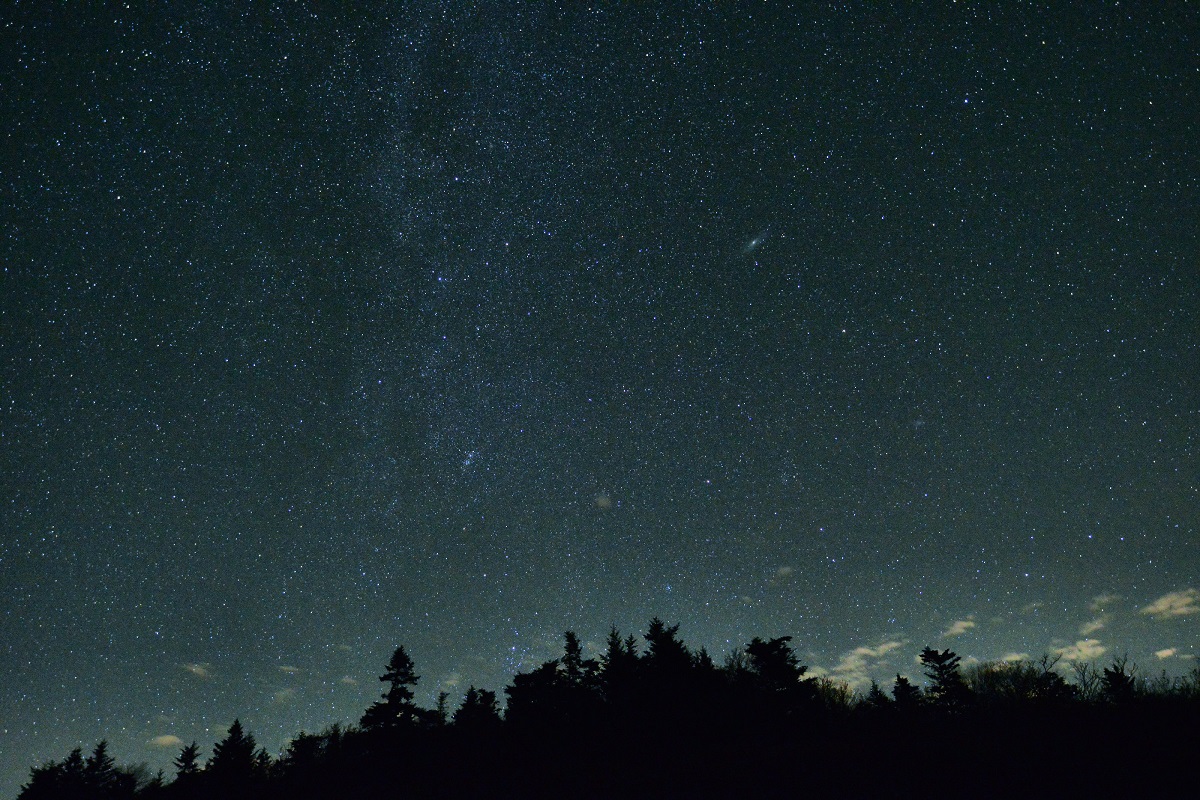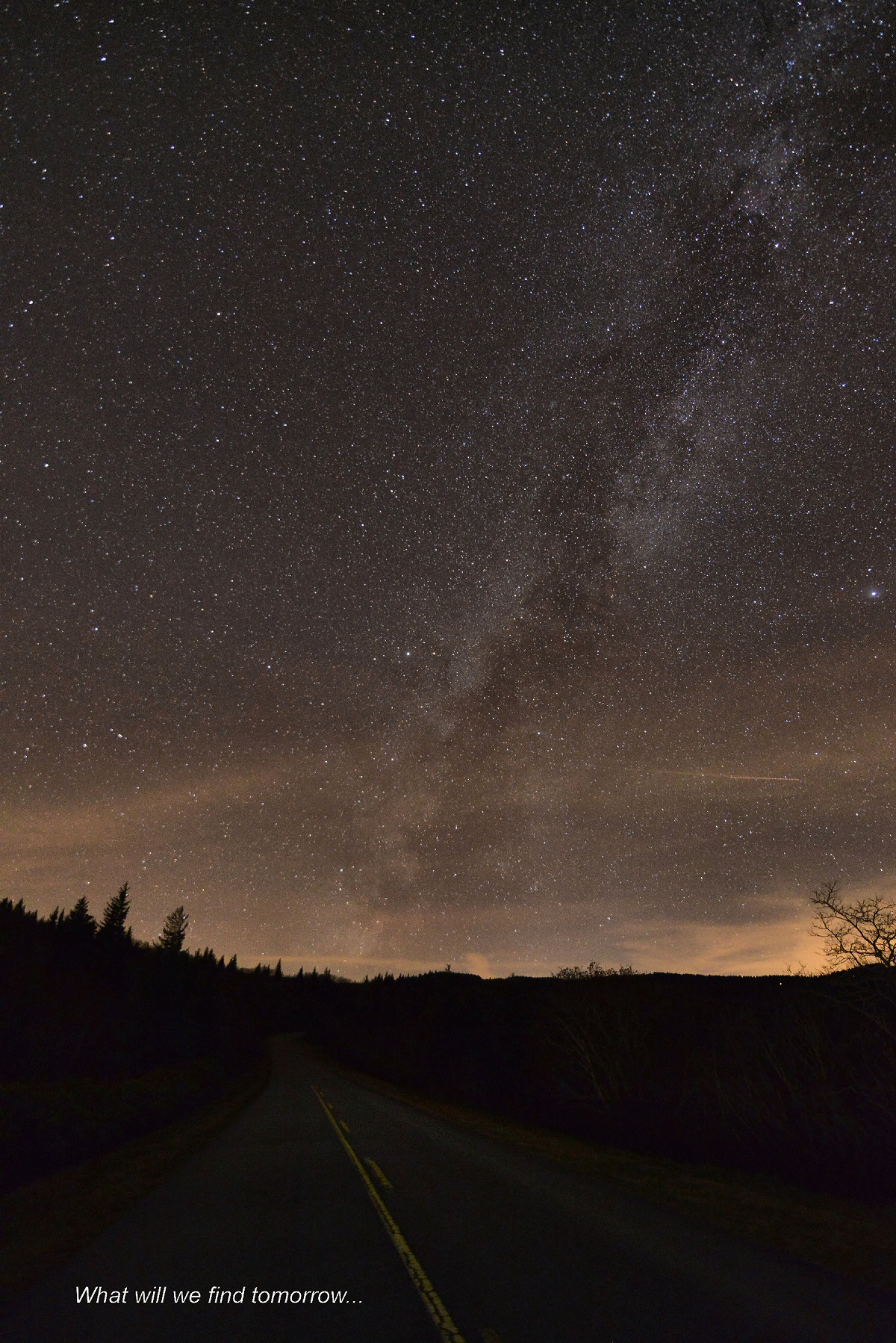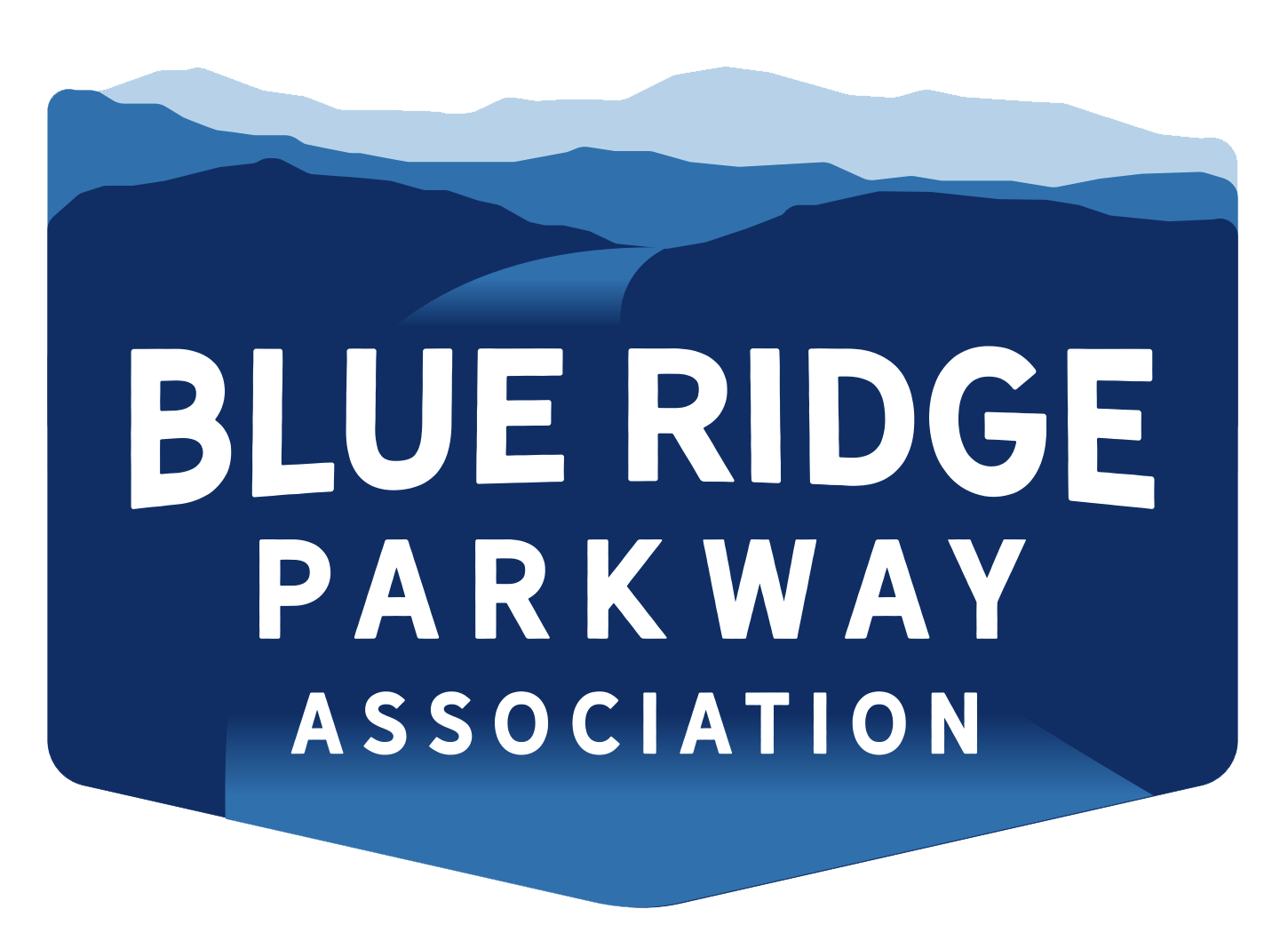I remember a trip a few years ago (mid Oct 2012) where I was going to spend three days on the Blue Ridge Parkway. Driving south on the Parkway one night from Linville Falls area toward Mt. Mitchell, I pulled off at the Crabtree Falls Overlook (MP 340) and turned off the lights to my car. After 10 minutes of getting my eyes adjusted, I was awed at the sight of an extremely bright Milky Way down to the Southwest.
This area to the southwest is near core of the Milky Way. Looking high in the Northeast, I could see the Andromeda Galaxy (M31) as a bright oval “pizza” shape. Note, it helps to slightly look away from deep space objects (not look directly at them or averted), as this can help you see the fainter detail that can be missed if you look directly at the object! I also saw several sporadic meteors that were fairly bright. The “ear” stars of the Vulpecula were clear visible, one appearing double, so I estimated the visual limiting magnitude to about 6.8, or maybe even 7.0!

I then went back onto the Parkway and parked off the road just before the Mount Mitchell entrance. The western ridge shielded the sky glow and the view was breathtaking. To test how dark the sky was, I started looking for another local group Galaxy just below M31, known as the Triangulum Galaxy (M33). To my surprise, I could make out a faint patch where it was supposed to be. The last time I viewed it was on Green Mountain near Burnsville, NC in 1983. I went back to Spruce Pine where I was staying, and I wondered… what will we find tomorrow?

In 2017, I finally beheld some nice views of the Milky Way in early November, as two hurricanes hit the area during times of no moon in the evening in September and October! I spent several memorable evenings in the Graveyard Fields area (MP 419) down to Cowee Overlook (MP 430) while driving south on the Parkway. Additionally, the Cowee Overlook is a spectacular place to view numerous ridges of the mountains from the afternoon thru sunset. I have seen many spectacular sunsets there as well as nice views of the Milky Way.
Contributed by Pisgah Astronomical Research Institute (PARI). PARI is a public not-for-profit organization dedicated to providing hands-on educational and research opportunities for a broad cross-section of users in science, technology, engineering and math (STEM) disciplines.







